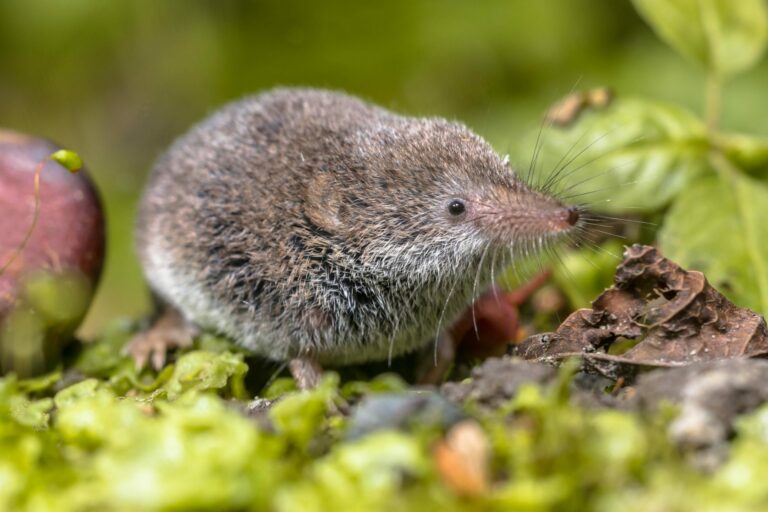Sorex minutus

The fur on the upper body of the dwarf shrew is brown in color, while the belly is grayish. The head-body length of adult animals is 45-65 mm, the tail length is 30-45 mm, and they can reach a weight of up to 6 g. Sorex minutus is the smallest mammal in Europe (Schaefer 2018). It uses various habitats such as forests, marshes, or meadows. The mating season lasts from April to August, and two to eight young, weighing about 0.25 g, are born per litter. The most common natural enemy in forest areas is the tawny owl (Southern 1965).
Nutrition: The common shrew belongs to the insectivores and feeds on insects and their larvae, as well as on spiders (Southern 1965).
Threat status: Sorex minutus has the status of “least concern” in both the IUCN Red List for threatened species and the German Red List. According to the Federal Species Protection Ordinance (BArtSchV), the dwarf shrew is “particularly protected”.
-
Schaefer, M (2018)Brohmer – Fauna von Deutschland. Ein Bestimmungsbuch unserer heimischen Tierwelt: Quelle & Meyer Verlag GmbH & Co.
-
Southern, H (1965)Handbook of British mammals. Mammal society of the British isles. Unter Mitarbeit von Robert Gillmor und Erik Thorn: Blackwell Scientific Publications Oxford.